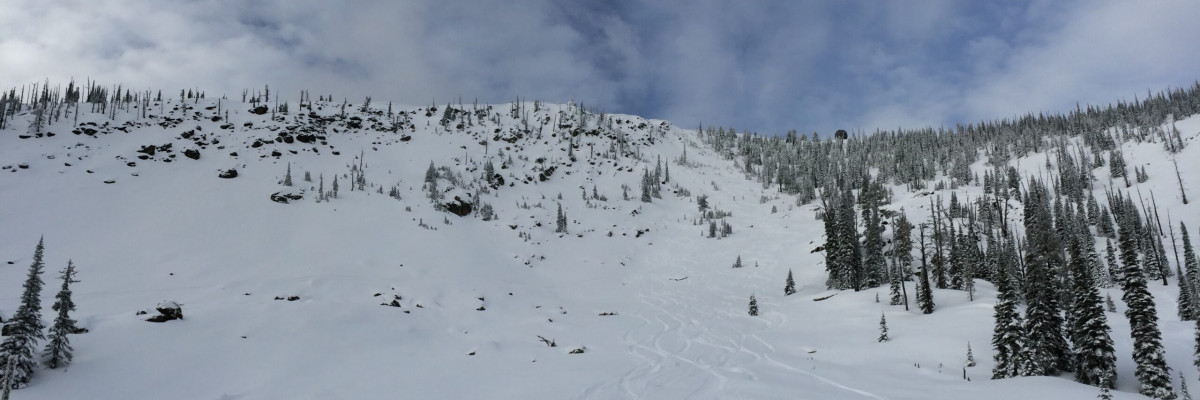The avalanche danger is MODERATE in the west central Montana backcountry. Weak snow can still be found near the base of the snowpack in many locations above 7000 feet. Moderate temperatures this past week have strengthened this layer but it can’t be completely trusted. The moderate rating applies to terrain steeper than 35 degrees above 7000 feet. We’re finding the weakest snow structure in shallow snow in rocky terrain. The avalanche danger is LOW at other locations.
Hello! This is Steve Karkanen with the backcountry avalanche advisory for December 16, 2014 from the West Central Montana Avalanche Center. This information does not apply to operating ski areas and the danger rating expires at midnight tonight.
Weather and Snowpack
This morning mountain temperatures are in the teens with no precipitation the past 24 hours.
Weather conditions of the past few days have helped strengthen overall snowpack stability. We’re still finding and getting reports of the early November facets failing in stability tests with propagation at this layer. This is most apparent in rocky areas where the snow is less than 4 feet deep. Wherever these facets exist, I would be suspicious of the steepest terrain and places where the snow is deep enough to cover anchors. It’s worth doing a little digging to see if the slope you want to ski or ride on has this condition.
Providing that we don’t drop back into an arctic deep freeze and it keeps snowing, we can expect this (deep persistent weakness) to no longer be an issue for us after a few more days. Our attention now turns to what is happening at the surface. The moderate weather improves stability but clear dry conditions weaken the snow surface. Surface hoar was noted yesterday at several locations above 7000′ as well as small grain facets forming due to the temperature differences at the snow/air interface. This will most likely be the next problem to be aware of the next time it snows heavily.
Weather and Avalanche Forecast
The Missoula Office of the National Weather Service is forecasting a weak ridge to move through the area this week with only minimal precipitation amounts. A more robust system is expected to arrive by early next week. Stay tuned.
Expect continued strengthening of the snowpack with the higher and more shaded terrain holding weak snow longer than sun exposed terrain.
We’ve received several great reports so far this winter. If you get out and see something worth passing along, you can use our public observations form or e-mail us at [email protected] . The information you share may save a life!
I will issue the next advisory on Friday, December 19.
























